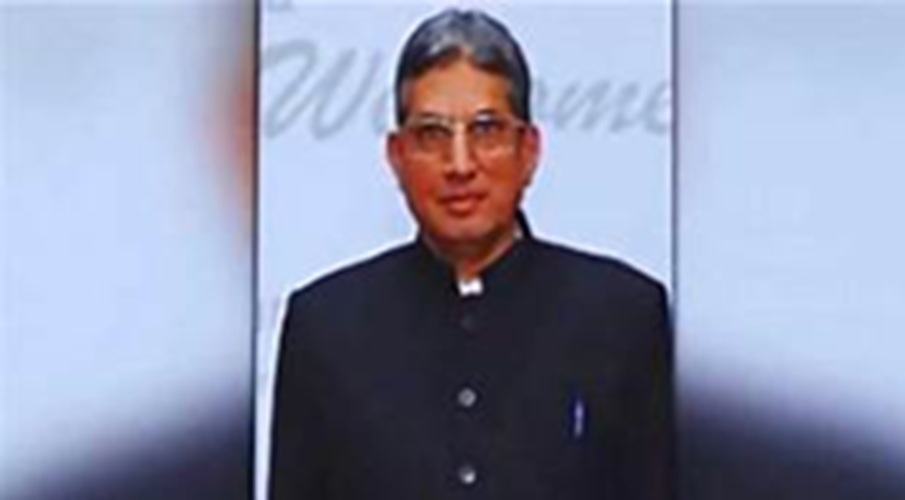By Dr Syed Khursheed, Mumbai with the inputs of Swaminathan Anklesaria
Donald Trump is on a mission to dismantle the post-World War II global economic order—one anchored by the US dollar. If his policies erode confidence in this system, the world could face a serious reckoning. Some analysts even warn that we may be heading back to a gold standard.
The Dollar as the Financial Anchor
Since the end of World War II, the United States has served as the global economic stabiliser. It played a central role in creating the World Bank and International Monetary Fund (IMF), which continue to act as lenders of last resort for troubled economies. In every major financial crisis, the US has taken the lead in crafting international rescue packages.
But this dominance is increasingly resented—particularly by BRICS nations such as India and China. Although Trump has threatened sanctions against BRICS efforts to develop an alternative currency, he’s ironically doing more than anyone else to undermine the dollar’s global supremacy. Trump argues that the US has been exploited by the current system and that it’s time to tear it down.

What Happens Without the Dollar?
The dollar underpins the global financial structure. Without the US guaranteeing leadership during global crises, we could return to a situation similar to the 1930s, when the lack of a financial anchor deepened the Great Depression.
Economic historian Charles Kindleberger famously wrote:
“The 1929 depression was so wide, so deep and so long because the international economic system was rendered unstable by British inability and United States unwillingness to assume responsibility for stabilising it.”
A Brief History of the Gold Standard
Before World War I, most nations were on the gold standard, tying their currencies to gold reserves. But the war’s enormous costs forced countries to print unbacked money, abandoning gold. After the war, attempts to return to the gold standard failed. Governments realized that pegging spending to limited gold holdings would require painful austerity.
The result? Countries dropped the gold standard again, and global trade and payment risks soared. While not the cause of the Great Depression, this lack of a financial anchor definitely worsened it.
Kindleberger argued that the international economy needs a leader willing to bear risks and costs to keep the system stable. As he put it:
“For the world economy to be stabilised, there has to be a stabiliser, one stabiliser.”
Enter Project 2025
A radical plan is already on the table. The Heritage Foundation, a conservative think tank, drafted Project 2025 as a roadmap for a second Trump presidency. Though Trump has publicly distanced himself from parts of the plan, many of its proposals mirror his own views. Notably, several of his key advisors were directly involved in writing it and are expected to push its agenda.
Among the more drastic ideas:
- Withdraw from the World Bank and IMF (or render them powerless).
- Force holders of US Treasury securities to exchange them for lower-value, 100-year bonds—a move that would amount to economic expropriation.
This would devastate global investors and foreign governments, most of whom keep 50–70% of their foreign exchange reserves in US Treasuries. However, it would dramatically reduce US debt obligations, enabling tax cuts and larger deficits.
Key supporters of this plan include Treasury Secretary Scott Bessent and Economic Advisory Council head Stephen Miran. They’re also considering similar alternatives to achieve the same result.
One scenario being floated: a new “Mar-a-Lago Accord” (a nod to the 1985 Plaza Accord) that would impose these changes on G7 partners.
The Market’s Reaction: No More Free Ride
The global bond market won’t accept this quietly. If the US takes these steps, it risks losing its “exorbitant privilege”—the ability to print dollars without consequence. The dollar would no longer be the default global currency. It would become just another currency.
With no trusted alternative—neither the euro nor the yen—some analysts believe the world might turn to gold as a financial anchor once again. Central banks have already begun increasing their gold reserves, and this trend could accelerate.
But the Gold Standard Has Its Own Problems
The same issues that doomed the gold standard after WWI still apply today. Governments want to run budget deficits (especially for defence in Europe), and they don’t want to be restricted by gold reserves. Meanwhile, voters would rebel against the austerity required to maintain a strict gold-backed currency.
Could other global players step up to fill the void?
Unlikely. Europe won’t ally with China or Russia, and the idea of Europe and Japan providing a gold-backed alternative is laughable.
No Clear Anchor in Sight
For now, no viable replacement for the dollar exists. The world may limp along without a global anchor. But when the next financial crisis hits, the consequences of operating without one could be disastrous.
Conclusion
Donald Trump’s economic plans could fundamentally reshape the global financial system. Whether by design or consequence, the dollar’s fall as a global anchor may be closer than we think. Yet, no credible alternative is ready to take its place. And if history is any guide, a world without a stabilising force will be a far more volatile one.






0 Comments